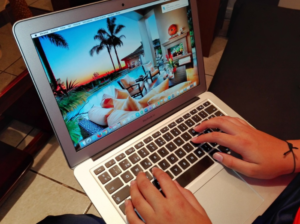SEO Tips for Enhancing the Image Optimization of Your Website

Image optimization is about getting a high rank of your images on Google and other search engines. It is also about reducing your images or photos to the smallest possible size without reducing their quality so that your web pages load quickly. You can find a list of cheap stock photos here. Search engines consider your website’s speed and the number of bounces you get when your website is up and running. There is a lot to do to optimize your website, your images, and your site’s speed, which is becoming increasingly important as more and more people use smartphones – about 60% of your one million new web users every day are on smartphones.

Choose Relevant Images for Your Article
Remember that web users are more likely to respond to images on your page before reading the text. An excellent image should attract visitors’ attention and encourage them to investigate and discuss their information. We often respond to emotional stimuli, and an attractive image that is truly related to your topic is much more likely to leave a meaning. It is usually much better to take time and create your great photos than to use royalty-free images on the Internet that many others use. Using images that show playfulness or humor with your product, you connect emotionally, which can be more effective than sterile, glossy, technically perfect, but beautiful industrial photos.
Always Use the Highest Quality Images
 Search engines should prefer high-quality content and high-resolution images. Web pages containing badly resolved or incorrectly formatted images often look twisted on the screen of a cell phone or tablet, so it is a bad service to use lower quality images. JPEG file formats are usually the best because they offer the most economic file size and quality. GIF files should only be used for thumbnails and decorative images, never for large product images, as the file size is quite large and does not shrink well. If you cannot get PNG files, they could be used for both JPEG and GIF files, and then, because of the incredibly small file size, perfect for simple decorative images.
Search engines should prefer high-quality content and high-resolution images. Web pages containing badly resolved or incorrectly formatted images often look twisted on the screen of a cell phone or tablet, so it is a bad service to use lower quality images. JPEG file formats are usually the best because they offer the most economic file size and quality. GIF files should only be used for thumbnails and decorative images, never for large product images, as the file size is quite large and does not shrink well. If you cannot get PNG files, they could be used for both JPEG and GIF files, and then, because of the incredibly small file size, perfect for simple decorative images.
Give Title to Your Images With Descriptive Words
To be successful with good search engines, you need to crawl everything on your page, such as file names, which should also be relevant, descriptive, rich in keywords for document names. A good description of the images helps to maximize your profile and increase your articles’ value by helping web crawlers understand your graphics. Choice texts are similar to captions in that they offer the opportunity to improve content for the consumer experience and search optimization.
Focus on the Content Delivery Networks
Content distribution networks are becoming exceptionally commonplace to store contributions, both visually and textually, for your website. It could have the advantage of solving any problem and speeding up the loading time of your website. Still, they can also remove your backlinks and put them into the domain of the content delivery system instead of your website. As we have already said, and it is essential to stress that backlinks are crucial for SEO, it is important to consider whether the use of CNDs is in your interest.
Test Your Website
Evaluating what is significant and what errors occur will require all your efforts as web crawlers won’t find you easily. Evaluate all websites and other capabilities continuously. Also, check for duplicates and optimizations, as both are often detrimental to your score. Evaluate the art of image optimization is one thing that might indicate the difference between your success or failure on the Internet. If you don’t feel confident or don’t have to spend time searching and implementing these basic things, a search engine optimization program can help you find the right website.


